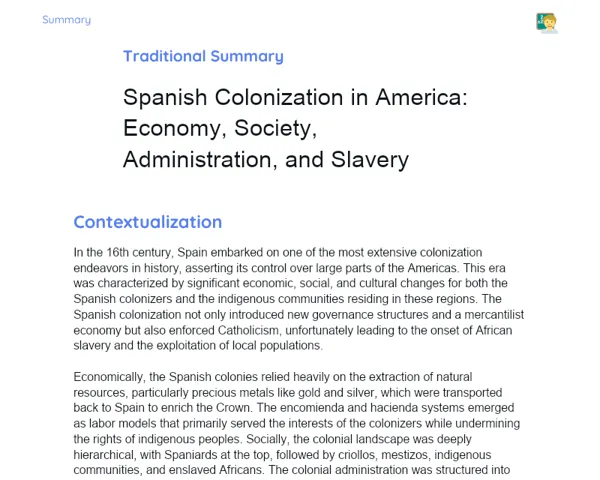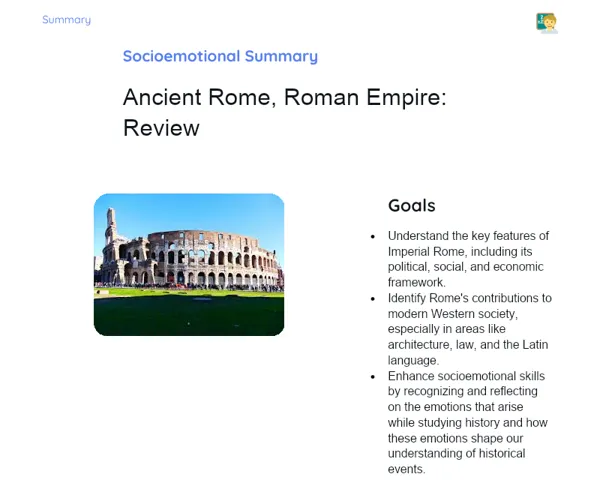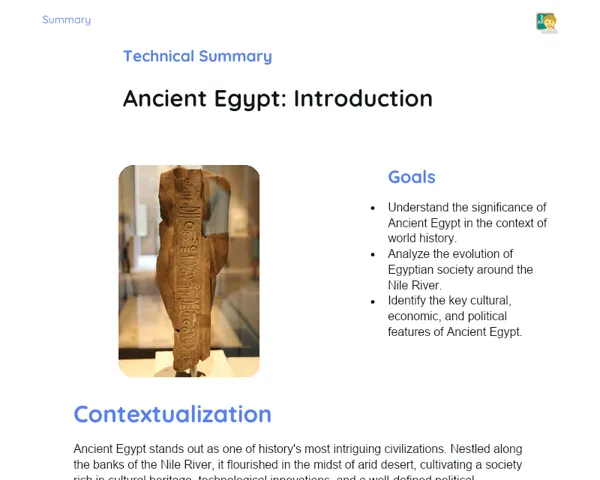Socioemotional Summary Conclusion
Goals
1. Recognize the mechanisms of political power organization 🏛️.
2. Understand the concept of the State and various forms of social structure 🌍.
Contextualization
Have you ever stopped to consider how the rules and institutions around us, like schools and hospitals, came into existence? All of this is part of a larger framework known as the State. In our lesson, we will delve into how these structures are organized and their significance for the functioning of society. Are you excited to dive into this intriguing world?
Exercising Your Knowledge
Definition of the State
The State is a political entity that holds sovereignty over a specific territory and its permanent population. It exercises its power through institutions such as the government, legislative assemblies, the judiciary, and defense forces. Understanding the State is crucial for comprehending how societies are organized and operate, along with the role of citizens in these frameworks.
-
The State has sovereignty, which means it has the ultimate authority to govern without external interference.
-
State institutions like the government and legislative assemblies are tasked with formulating and implementing laws to uphold order and justice in society.
-
The State also safeguards its citizens by providing security through defense forces and public services like education and healthcare.
Elements of the State
For a State to exist, three essential elements are needed: territory, population, and government. Territory refers to the geographical area where the State exercises its authority. The population includes the citizens residing in that area. The government is the institution that organizes and administers the workings of the State, with each element being vital for the State's formation and functioning.
-
Territory: Without a clearly defined geographical area, the State cannot enforce its policies and laws.
-
Population: Citizens are the heart of the State; they benefit from what the State offers while also fulfilling their duties towards it.
-
Government: This is the structure that makes decisions, develops policies, and enforces laws to maintain order and enhance social welfare.
Functions of the State
The State serves several critical functions that contribute to the well-being of society. These include creating and enforcing laws, protecting citizens, managing public services (such as health care, education, and safety), and regulating the economy. Understanding these functions allows us to appreciate the significance of the State and its influence on our daily lives.
-
Creation and enforcement of laws: The State establishes norms that govern societal behavior, ensuring fairness and justice.
-
Protection of citizens: The State provides security from both internal and external threats, maintaining public order.
-
Administration of public services: It manages essential services like health care, education, and infrastructure, fostering social and economic growth.
-
Economic regulation: The State intervenes in the economy to maintain stability, promote growth, and alleviate social disparities.
Key Terms
-
State: Political entity with sovereignty over a specific territory and population.
-
Sovereignty: The supreme authority of a State to govern without interference.
-
State Institutions: Bodies such as government, legislative assemblies, the judiciary, and defense forces.
-
Territory: The geographical area under the control of a State.
-
Population: Citizens residing within a State.
-
Government: The institution that organizes and manages the State.
-
Laws: Norms established by the State to regulate societal behavior.
-
Public Services: Services provided by the State, including health care and education.
For Reflection
-
Why is it important to understand how the State is organized and functions in our society?
-
How can you use your understanding of the State to enhance your civic engagement and contribute to a more just society?
-
In what ways did teamwork and resolving conflicts during the creation of the imaginary State reflect on your emotional growth?
Important Conclusions
-
We learned what the State is and its essential components: territory, population, and government.
-
We explored the crucial functions of the State, such as law-making, citizen protection, managing public services, and economic regulation.
-
We discussed the various forms of government and their impact on societal organization and operations.
Impacts on Society
Today, grasping the concept of the State and its functions is crucial as it helps us understand how institutions like schools, hospitals, and security services operate and impact us directly. Awareness of the State empowers you to be a more informed and active citizen, capable of partaking in discussions and decisions affecting the community.
Understanding different forms of government and their features also allows us to appreciate democracy and the significance of voting and engagement in political activities. This understanding emphasizes the importance of cooperation and adherence to laws in creating a fair and equitable society.
Dealing with Emotions
At home, take a moment to reflect on the feelings you experienced during the activity of creating the imaginary State. Recognize and note down these feelings in a journal, considering what triggered them (Recognize). Ask yourself why you felt that way and how those emotions influenced your responses (Understand). Use specific terms to describe each emotion—words like 'proud', 'frustrated', or 'anxious' (Name). Think about healthy ways to express these emotions, like discussing your experiences with friends or family if you are comfortable (Express). Finally, contemplate on avenues to manage these emotions in the future, perhaps through breathing exercises or mindful moments (Regulate).
Study Tips
-
Create concept maps to visualize the relationships between different components and functions of the State.
-
Engage in discussions with peers or family members about what you've learned; this will reinforce your understanding.
-
Look into real-world instances of different government types and their functioning across various countries.



